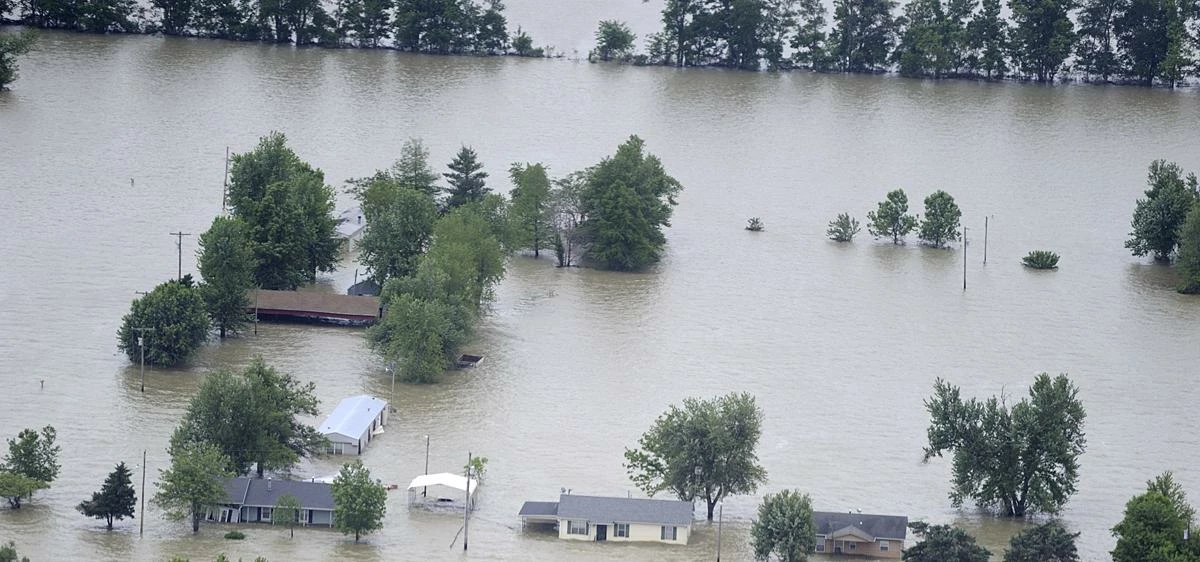
Partner Article
IRM publishes flood modelling framework
IRM publishes framework: Choices, results and capabilities of flood risk models for financial risk carriers
Going beyond solvency calculations in preparation for Solvency II
The Institute of Risk Management (IRM) today publishes a guidance document produced by its Internal Model Industry Forum (IMIF) exploring advanced uses for insurer internal models in the context of the insurance and reinsurance of flood risk.
This guidance has been produced by a workstream of industry practitioners led by IRM member and risk consultant Raphael Borrel, together with report author Dr Sebastian Rath, Principal Insurance Risk Officer from NN-Group, a leading specialist in the field.
The workstream is part of a wider programme of research and guidance being developed by the IMIF exploring how risk models can create sustainable value for insurance businesses. The Solvency II regime has required the creation of sophisticated risk models which assess the inherent ‘riskiness’ of each insurance business and the resulting capital levels required to support solvency. However, there is still further to go to create real business value from these internal models and ensure they are embedded into mainstream business.
Flooding, extreme weather events and global climate change are all high on government agendas and the COP 21 United Nations Conference on Climate Change is currently tackling such issues in Paris so the release of this framework could not be timelier. Also, the Chancellor pledged £2bn to protect 300,000 homes from flooding in his recent Autumn Statement highlighting the serious nature of flood risk.
The insurance and risk industry has a key role to play in raising awareness and knowledge about the impact of these climate-related changes and in developing risk management and financing solutions to improve the resilience of individuals, companies and communities. Appropriate, effective and robust modelling of the risks is an important tool in this process. The case study also highlights trends towards pooling of flood risks, including the UK’s Flood Re scheme and a growing focus on strengthening the resilience of cities.
IRM Chairman and IMIF founder, José Morago, said,
“Insurers increasingly rely on sophisticated risk models to navigate a challenging and changing financial environment. Making sure these models create value in decision making, are well understood, and gain the confidence of Boards and regulators, has never been more demanding or challenging.
This case study explores the modelling capability requirements and choices that insurers must make to effectively manage flood risk in their portfolios. It also explores how flood risk models can support capital models and ultimately key capital management decisions, such as reinsurance needs, that support the long term viability of the company and its ability to provide cost effective coverage.“
Author of the document Dr Sebastian Rath, Principal Insurance Risk Officer from NN-Group comments:
“This guidance aims to explain insurance risk modelling to a wider audience. Flooding is a key risk driver, with insurance companies and their clients now working together globally to address our response to climate change via catastrophe risk mitigation and risk resilience.
Providing accurate high resolution flood models remains amongst the most complex modelling jobs for natural catastrophe modellers and model vendors and I am delighted to have been able to work with the IRM on sharing my experience through this case study.“
The guidance document is available from the IRM’s website here: https://www.theirm.org/media/1656861/IMIF-flood-risk-case-study-v10.pdf
This was posted in Bdaily's Members' News section by Victoria Robinson .








 Powering a new wave of regional screen indies
Powering a new wave of regional screen indies
 A new year and a new outlook for property scene
A new year and a new outlook for property scene
 Zero per cent - but maximum brand exposure
Zero per cent - but maximum brand exposure
 We don’t talk about money stress enough
We don’t talk about money stress enough
 A year of resilience, growth and collaboration
A year of resilience, growth and collaboration
 Apprenticeships: Lower standards risk safety
Apprenticeships: Lower standards risk safety
 Keeping it reel: Creating video in an authenticity era
Keeping it reel: Creating video in an authenticity era
 Budget: Creating a more vibrant market economy
Budget: Creating a more vibrant market economy
 Celebrating excellence and community support
Celebrating excellence and community support
 The value of nurturing homegrown innovation
The value of nurturing homegrown innovation
 A dynamic, fair and innovative economy
A dynamic, fair and innovative economy
 Navigating the property investment market
Navigating the property investment market